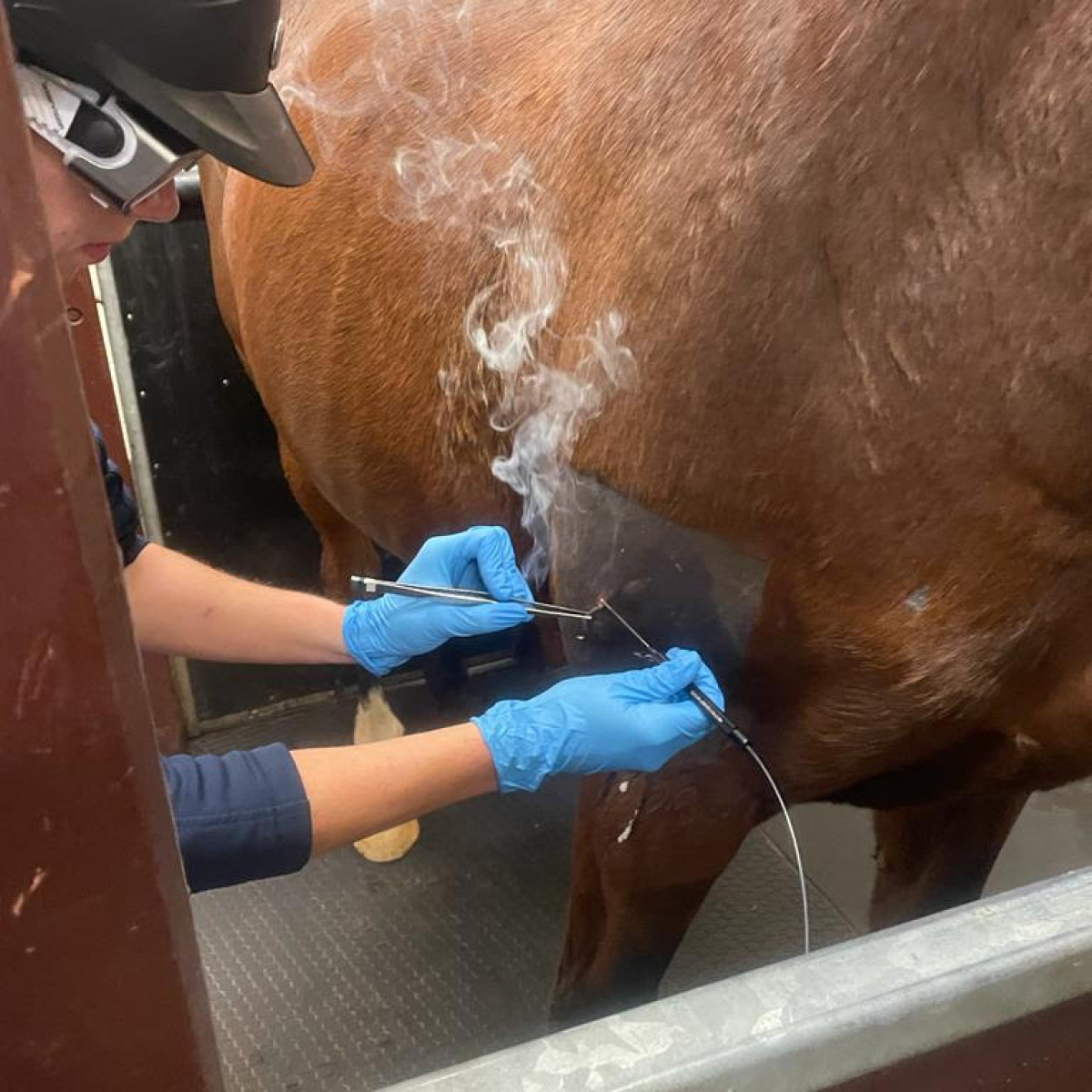Just How Laser Treatment in Equine Treatment Is Revolutionizing Vet Take Care Of Steeds
Laser treatment has arised as a transformative strategy in equine vet care, providing a non-invasive option that speeds up healing and improves total health and wellness. Leveraging exact light wavelengths, this sophisticated treatment promotes mobile regrowth, decreases inflammation, and mitigates discomfort. Its effectiveness expands from musculoskeletal injuries to chronic ailments like osteoarthritis, substantially improving wheelchair and life quality for horses. The transportability and adaptability of laser treatment devices additionally underscore their expanding indispensability among vets. As we explore the elaborate mechanics and real-world successes, the extensive effect on equine medical methods comes to be significantly evident.
Comprehending Laser Treatment

The technology behind laser therapy is based in the principle of photochemistry, where photons are taken in by chromophores within cells, leading to boosted ATP production and modulation of responsive oxygen species (Equine Therapy). This, consequently, promotes mobile proliferation, minimizes inflammation, and speeds up healing. Veterinary professionals utilize various kinds of lasers, consisting of low-level lasers (LLLT) and high-power Course IV lasers, depending on the particular healing objectives and the nature of the equine condition being treated
Various laser wavelengths and power setups are very carefully chosen to target various cells midsts and attain desired clinical outcomes. Safety and security procedures are vital, as improper use can bring about thermal damages or suboptimal healing impacts. Thus, a detailed understanding of laser treatment's systems and applications is crucial for its reliable execution in equine veterinary practice.
Benefits for Equine Health
The myriad advantages of laser therapy for equine health and wellness incorporate boosted healing, pain decrease, and boosted movement. This sophisticated therapy modality leverages details wavelengths of light to penetrate tissues, promoting mobile feature and advertising quick cells repair. The non-invasive nature of laser therapy guarantees marginal stress and pain for the equine, promoting a smoother healing process.
Improved recovery is one of the primary advantages, as laser therapy speeds up mobile regeneration and collagen synthesis. This results in faster healing times from injuries and procedures. Discomfort decrease is achieved through the anti-inflammatory impacts of laser therapy, which lowers swelling and minimizes the production of pain-inducing chemicals. Therefore, steeds experience substantial alleviation from persistent and sharp pain problems.
By decreasing swelling and discomfort, and boosting tissue fixing, laser therapy aids in restoring joint function and muscular tissue flexibility. Hence, laser therapy stands as a transformative device in modern-day equine vet treatment.
Typical Problems Dealt With
Laser therapy has emerged as a functional therapy option for a variety of typical equine problems. Furthermore, laser therapy is efficient for problems like osteo arthritis, where it helps mitigate joint swelling and advertise tissue fixing.
Wound monitoring is another area where laser treatment has shown substantial guarantee. Persistent wounds or slow-healing abscess can be particularly tough in steeds, however laser therapy improves cellular regeneration and improves blood flow, hence quickening the healing process. Laser therapies have been efficiently employed in handling unguis conditions such as laminitis and abscesses, relieving pain and advertising quicker healing.

Modern Technology Behind Laser Treatment
Past the myriad problems treatable with laser treatment, the modern technology itself merits more detailed exam. At the heart of laser therapy is the use of certain wavelengths of light to penetrate cells and elicit biological responses. These wavelengths, commonly varying from 600 to 1000 nanometers, are selectively soaked up by chromophores in the skin, muscular tissue, and other cells, prompting a cascade of cellular events.
Laser gadgets made use of in veterinary medicine commonly click to investigate utilize low-level laser treatment (LLLT) or cold laser treatment. Unlike high-powered medical lasers, these gadgets run at reduced energy degrees, maximizing restorative advantages while lessening thermal damages. The energy from the laser light stimulates adenosine triphosphate (ATP) production, improves cellular metabolic rate, and increases cells repair processes.

Success Stories and Situation Studies

Showcasing the substantial advantages of laser treatment, many success stories and case researches illuminate its transformative effect on equine health. One such instance includes a pure-blooded racehorse struggling with persistent tendonitis. Typical therapies generated marginal improvement, however after incorporating laser treatment right into the regimen, the horse exhibited considerable decreases in swelling and discomfort within weeks, ultimately going back to competitive racing.
An additional compelling instance features a dressage equine identified with severe pain in the back, limiting its efficiency. A vet team employed low-level laser therapy (LLLT) to target the inflamed areas, leading to marked improvement in adaptability and a noteworthy decline in pain. Over several sessions, the equine regained its peak form, showcasing the efficacy of laser treatment in resolving bone and joint issues.
In addition, a study carried out at a leading equine clinic taken a look at 50 equines with numerous soft tissue injuries treated with laser treatment. The results stood out: 85% of the equines showed sped up healing times and boosted flexibility. These instances underscore the flexibility and effectiveness of laser therapy in equine medicine, supplying a non-invasive, scientifically-backed method to enhancing check it out recuperation and performance in horses.
Final Thought
Laser treatment is transforming equine vet treatment by giving a non-invasive treatment that increases recovery, minimizes inflammation, and reduces pain. check my source With its efficiency in treating a series of conditions, from musculoskeletal injuries to chronic disorders like osteoarthritis, this innovation substantially boosts equine health and wellness and wheelchair. The transportability and flexibility of laser therapy further underscore its transformative impact on vet techniques, strengthening its duty as a vital device in modern equine healthcare.